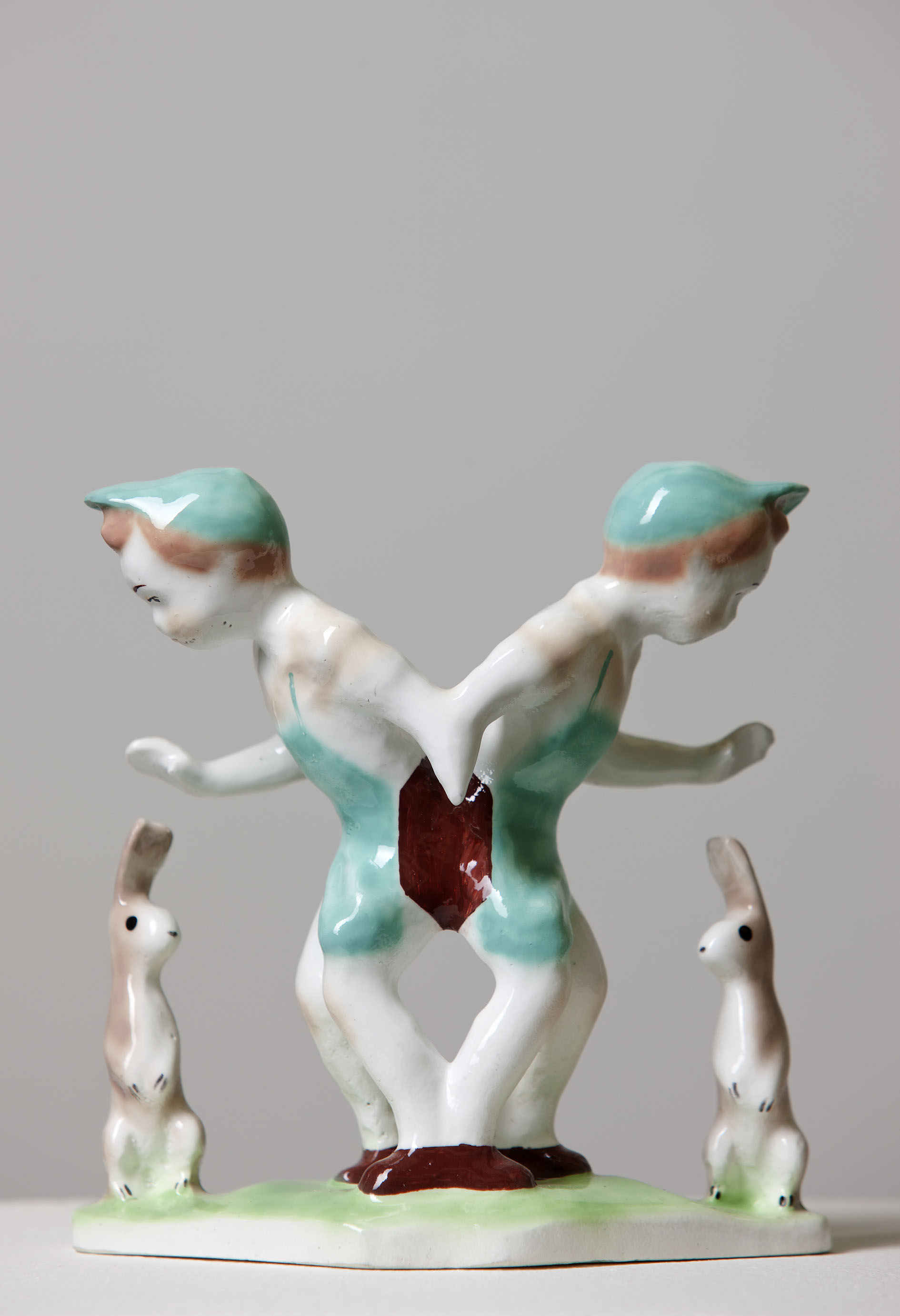Péter Szalay: Double Vision
2014.04.18 - 05.29.
Péter Szalay: Double Vision
18th April - 29th May 2014
vernissage: 7–9pm, Thursday, 17 April 2014
Curator: Zsuzska Kozák

Péter Szalay’s exhibition entitled Double Vision can be regarded as a continuation of his 2013 debut under the title Residual Value, which commemorated the renovation of the gallery, using the debris produced during the construction process. Here, he holds a mirror to the new, trendy and sterile gallery space with his ironically simple and clean installations and small, polished sculptures. The utilization of ethnographic elements are common to both exhibitions, but there is a difference. While Residual Value placed current material in the past with the help of archiving methods, Double Vision replants the phenomena of the past into the present using various means of distortion, including pairing up our grandmothers’ porcelain figurines with – and reflecting them in – images of the Rorschach Test.
Thus, the concept of symmetry is a central component of Double Vision, which exerts its critical function through a kind of ethnomathematical outlook. The science of ethnomathematics examines the objects of everyday use left behind by what is broadly referred to as “old societies”, drawing conclusions regarding the mathematical knowledge of the given community based on their ornamental motifs. The standard of this knowledge – which also includes principles of symmetry – is, in turn, related to that society’s level of cultural practice and ability for abstract thinking. Szalay offers us primitive pseudo-symmetries, which constitute one of the main themes of the exhibition.

While Attila Csörgő, Márton Barabás and many others have employed the concepts and techniques of geometry, of these, Péter Szalay has chosen axis symmetry as an exclusive reference point in structuring his artwork. The exhibition material as a whole is grounded in this scientific model of representation. The concept of symmetry is situated in the areas bordering the natural sciences, art and technology, as it links together the three chief means through which the human being seeks to understand the world. At the same time, according to one’s visceral sense of aesthetics, symmetry is a pleasant phenomenon. Double vision uncovers the possibilities where this basic attitude is turned on its head.
The layers of meaning in the exhibited works in terms of Hungarian cultural history and the Bible, as well as their cultural political relationship, strike a balance with the bizarre appearance and japing tone of the pieces. The distorted forms which overwrite the charm, and the low-quality photo enlargement that corrodes the cheeriness of the shepherds as they haughtily step in front of the camera, come together in an ethnographizing nightmare.
The artist, as usual, utilizes a varied use of media, while reaching for ever newer modes of articulation and retaining his biting humour along with his multi-layered system of references. He luxuriates in the possibilities created by blurring the lines of ethnography, iconography and kitsch, leading to a sense of indecision deepening into fate.
Written by: Zsuzska Kozák, curator of the exhibition
(The exhibition is closed on the 1st and 2nd of May.)
Original picture: Csikós szűrben, juhász bundában. 1904, fotó, Chylinski György, NM F 13x18 lemez
Supported by:
![]()
